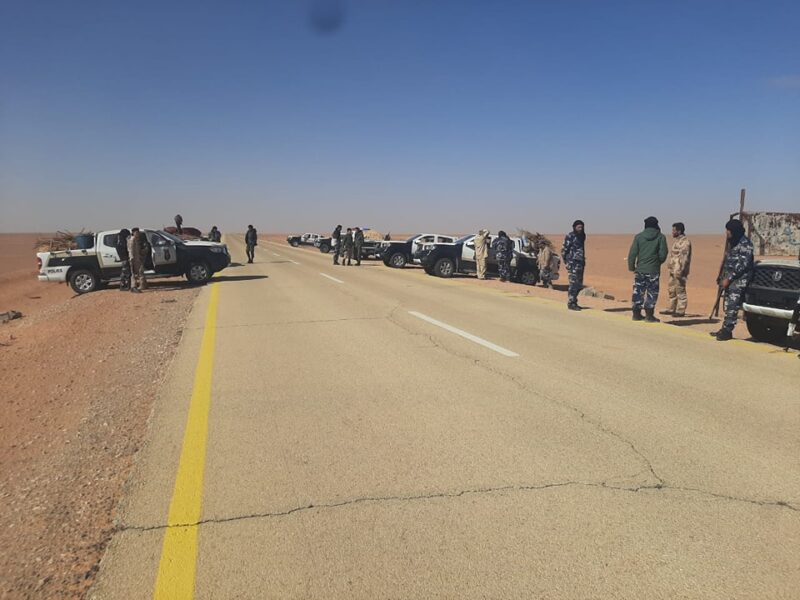444th Brigade and Oil Facilities Guard Clash in Libya’s Southwest

Armed confrontations erupted Saturday between two Libyan security forces in the Hamada Al Hamra region, highlighting growing tensions over territorial control and anti-smuggling operations in the country’s oil-rich southwest.
The conflict involves the 444th Combat Brigade, led by Commander Mahmoud Hamza, and the Oil Facilities Guard’s Southwest Branch, which operates under the Western Military Region’s authority.
The clash escalated after the Oil Facilities Guard detained a 19-vehicle desert patrol belonging to the 444th Combat Brigade on Thursday night, according to military sources speaking to Libyan Express.
Prior to the incident, the Oil Facilities Guard had issued warnings to the 444th Combat Brigade against entering areas under their jurisdiction, particularly those containing oil installations.
The 444th Combat Brigade maintains they were pursuing drug traffickers attempting to smuggle hallucinogenic pills from Algeria into Libya.
In a statement posted on their official Facebook page, the brigade denied any intention to seize oil facilities, stating, “The oil fields are not a target for the brigade.”
This marks the second such confrontation between the two forces. In late October, the Oil Facilities Guard detained another 444th Combat Brigade patrol, eventually releasing the personnel but confiscating their vehicles and weapons.
The Guard warned that they would bear responsibility for any legal consequences arising from entering the oil region.
The 444th Combat Brigade emphasised that their operations focus solely on combating smuggling networks, citing several successful interdictions in recent months.
”The brigade will never be present in the oil fields, even if their security is vacant, and its operations will not target any oil facility or oil field,” the statement added.
The Hamada Al Hamra, also known as the Red Desert, is a vast plateau region in southwestern Libya that plays a crucial role in the country’s security and economic landscape:
– It spans approximately 100,000 square kilometres of largely uninhabited desert terrain.
– The region serves as a critical corridor connecting Libya to Algeria and Niger.
– Several major oil and gas fields lie within or near its boundaries.
– Its remote nature and complex topography make it a preferred route for smuggling operations.
– The area’s strategic significance has increased since 2011 due to cross-border security challenges.
– Traditional tribal communities in the region have historically played a role in local security arrangements.
How to submit an Op-Ed: Libyan Express accepts opinion articles on a wide range of topics. Submissions may be sent to oped@libyanexpress.com. Please include ‘Op-Ed’ in the subject line.
- Chad orders French troops out by Jan. 31 - December 23, 2024
- Turkish FM calls for end to Syria sanctions - December 23, 2024
- US president-elect names defence deputy nominee - December 23, 2024


